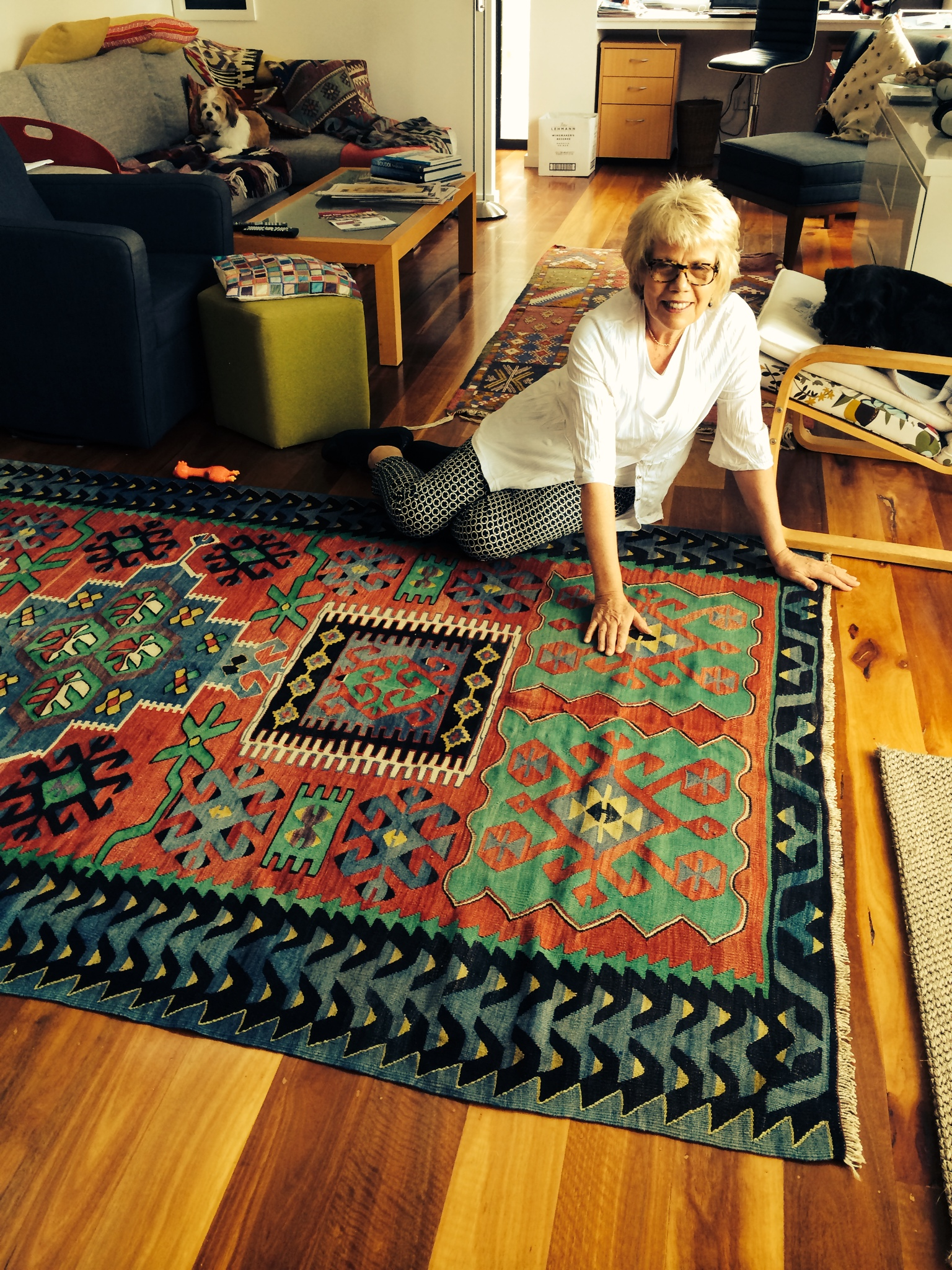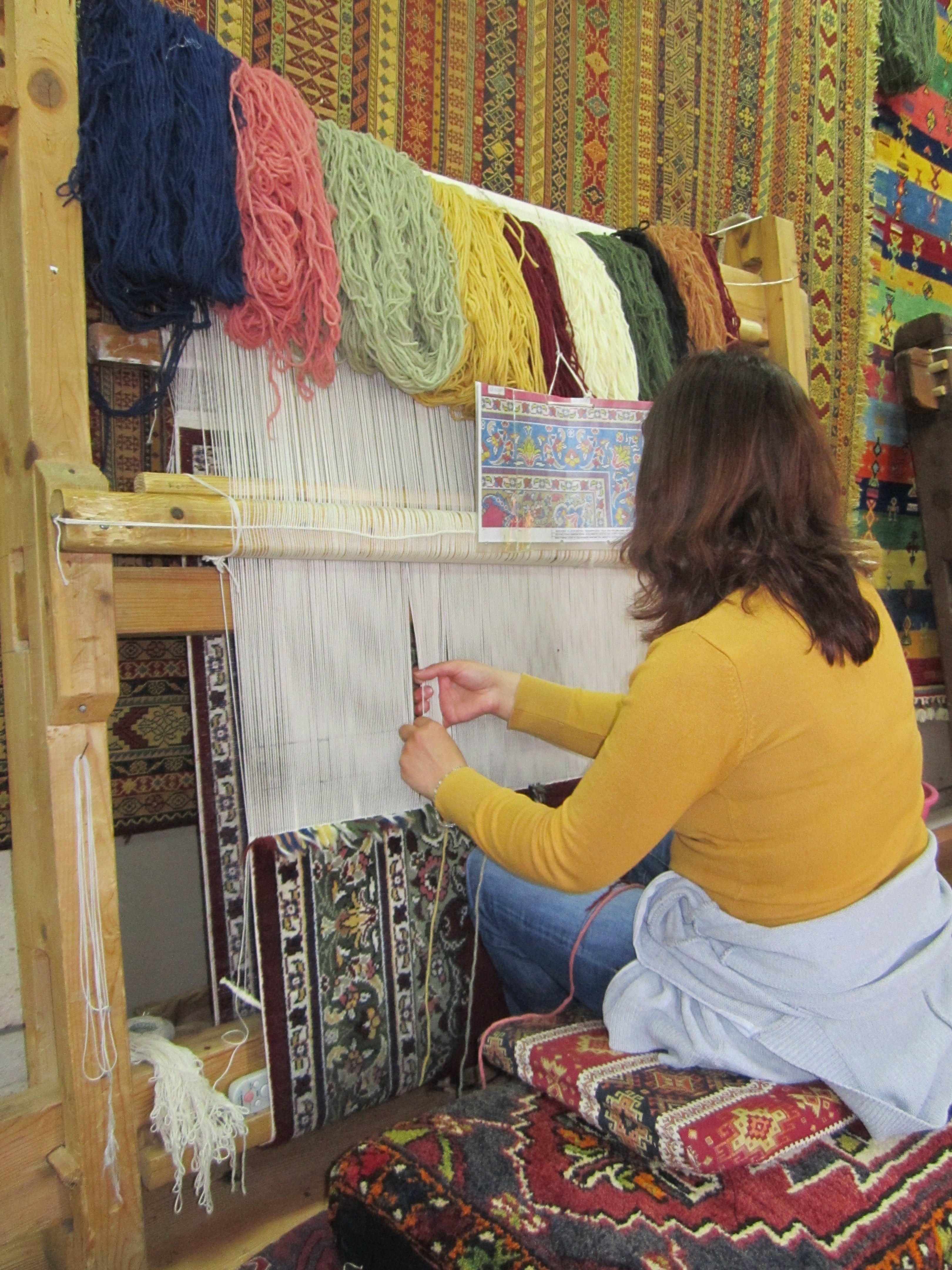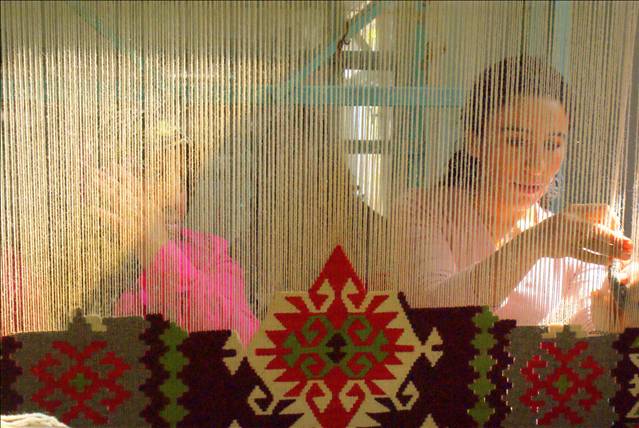
KILIMS – Flat – woven Rugs
Weaving is an art that has been successfully practiced since the very earliest times. The basis of weaving lies in the texture produced by joining vertical and horizontal threads. The history of weaving reveals two main weaving techniques: the ag orgusu (net) technique and the ilmik (loop) technique.
In the ag orgusu technique, the fabric is woven continuously, by means of an instrument performing the function of a crochet needle.
In the ilmik technique the treads are stretched on a frame and separated into front and rear sections by means of roads. The fabric is produced by looping by hand the treads inserted between them.
The first technique dates back to prehistoric times, and has been used by all communities, from the most primitive to the most advanced. Specimens of this technique, which began with the fishnets woven by means of animal bones by primitive man, are to be found all over the world, from the Pacific to North and South America, and from Africa and Asia to the Far East and Australia. This technique, as old as mankind itself, is still use today in making baskets, bags and sacks.
The second, ilmik, technique was to be found in Ancient Greece and Egypt, and has been employed from the Bronze Age right up to the present day.
The simplest form of weaving derived from these two sources is the bez ayagı dokuma. In this, the fabric is produced by passing the horizontal weft strands over and under the vertical warp. But, in many regions, the ag orgusu technique so closely resembles the weaving technique that it is almost impossible to say where the one ends and the other begins.
In some regions, the looms are so primitive that, in spite of the use of a loom, the actual work consists merely of interlacing the threads.
In the course of development, two types of looms made their appearance. In the vertical loom, a frame is formed consisting of two long side beams with notches, joined at the top and bottom by two long cylindrical beams. These cylindrical beams are normally inserted in sockets in which they can revolve, and it is around these horizontal beams that the warp is wound. The horizontal rods used to separate the warp threads rest on the notches in the vertical beams, and are moved upwards as the work progresses.
All types of fabrics, from the intricately designed rugs belonging to the oldest cultural layers in South America or the indigenous cultures of North America, to the flat weaves and knotted-pile carpets of the nomadic tribes and settled peoples of Western and Central Asia, were woven on this type of loom are frequently to be found in ancient sources, the most famous being undoubtedly the loom mentioned in the Odyssey of Homer, at which Odysseus wife Penelope sat patiently awaiting her lord’s return from Troy, unravelling in the morning what she had woven throughout the whole of the previous day.
The other type of loom is the horizontal loom.
Although based on the same functional principle as the vertical loom, the difference in the distribution of the two looms gives the impression that they followed quite separate paths of development. The horizontal loom is not restricted either by the limited dimensions of an interior space or by the stand on which the loom rests. Furthermore it has the advantage that it can be fastened to a base in the open air, thus making possible the production of fabrics of great length.
Four posts are hammered in to the ground in accordance with the width of the loom and the length of the fabric to be woven. On the outside of these posts, two regular rods are firmly bound about 10 cm above the ground at the two narrow ends of the rectangular loom. These rods perform the same faction as the movable rods in the vertical loom. The warp threads are then fixed to these two rods, and a straight stick with stones attached to each end is then placed in the center of the warp in such a way as to remain at a higher level than the warp threads. The threads in the bottom section are then fastened to this stick and the slack taken up. A flat stick is then inserted in the upper section of the loom to separate the warp threads.
The horizontal loom is to be found more particularly in Southern and Eastern Asia. Although some very primitive types of loom are still employed in isolated communities in these regions, continual changes are produced by the various additions and improvements effected.
The invention of weaving not only made possible to supply of clothing but also provided rugs and carpets that could be spate as a production from the cold on the floor of the rooms in which the people lived.
The first materials consisted of reeds and plants fibers, but around 8000 B.C. after the domestication of animals, these were replaced by wool.
At first, İt would appear that rugs and carpets were used only to decorate the floors and walls of sanctuaries and sacred buildings. But the discovery of weaving weights and spindles in excavations carried out in settlements dating from 6000 B.C. indicates that by then the use of fabrics extended to secular life and private dwellings.
Although ancient sources, wall and vase painting, and the reliefs on cylindrical seals provide considerable hypothetical knowledge concerning the art of weaving, and although mosaic designs offer a closely related repertoire, actual specimens must undoubtedly be sought for amongst the finds yielded by excavations.
Of particular important are the wool and linen fragments with geometric designs dating from the 7th century B.C. found at Gordion in Anatolia and the flat weave kilims discovered in 1947 in kurgan during the excavations (1929-1949) carried out in the Pazyryk Valley in the Altay Mts. In the Soviet Union.
These woolen kilim fragments in slit-weave techniques are in the form of strips, and would appear to have been used as decorative accessories for clothing. The six different colors employed in these kilims are so arranged that when looked at diagonally the same colors can always be seen to follow one another. The zigzag design consisting of hook motifs ascending in the form of a ladder displays an amazing resemblance to contemporary Iranian fabrics.
The fragments discovered at Lou-lan in Eastern Turkistan, a very important center for finds of this kind, belong the 2nd century B.C.
New excavations and research will undoubtedly yield further finds that will open new horizons on our knowledge of kilims and flat weave rugs and, at the same time, present us with new problems.



Leave a comment
This site is protected by hCaptcha and the hCaptcha Privacy Policy and Terms of Service apply.